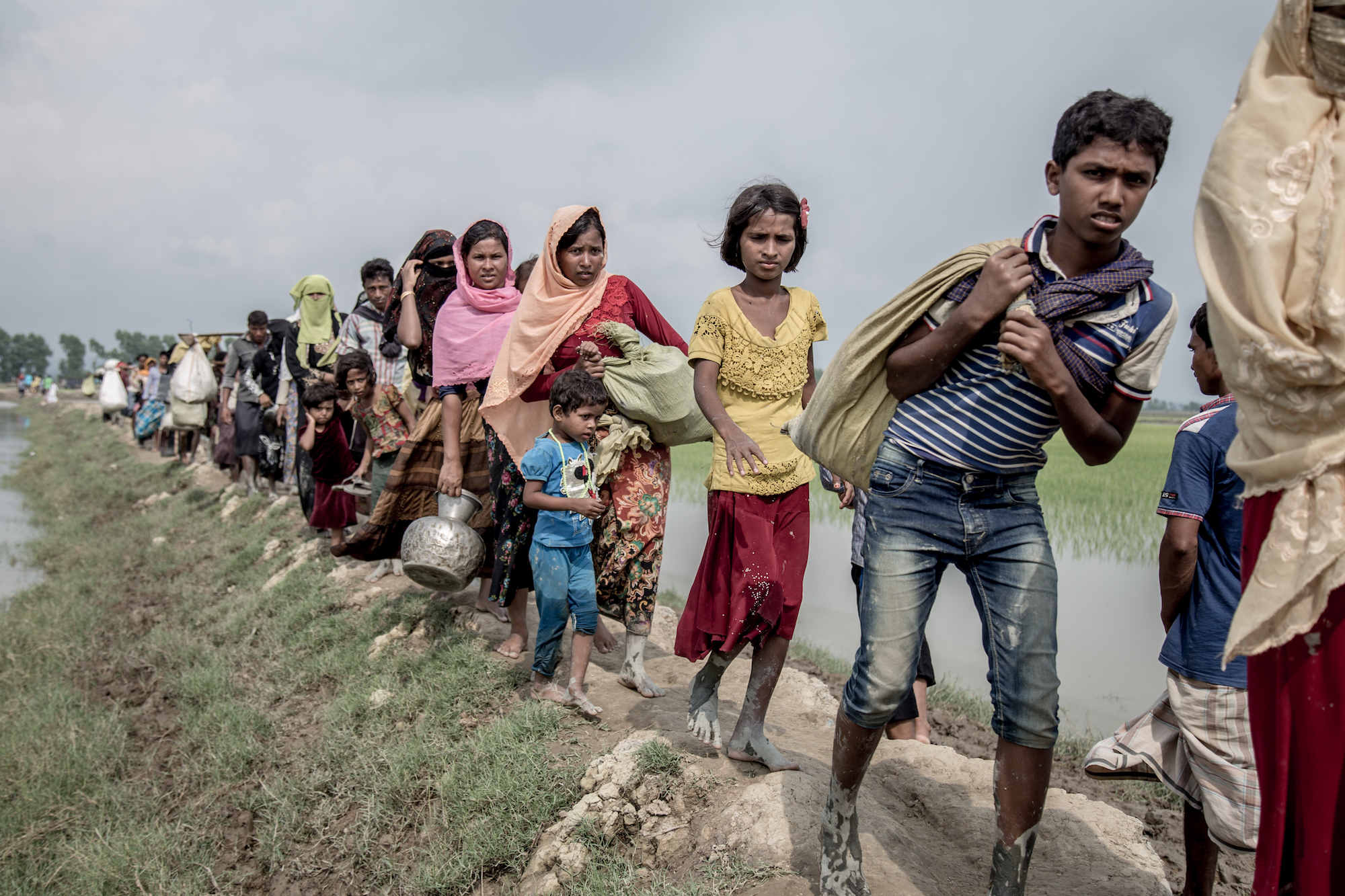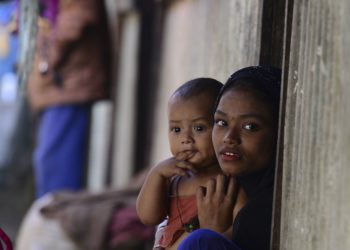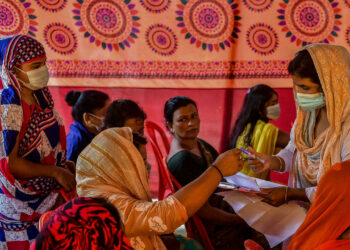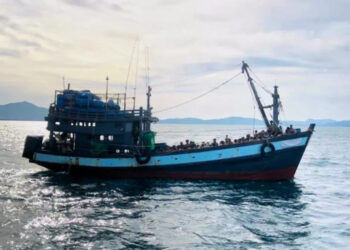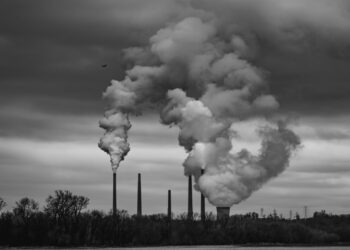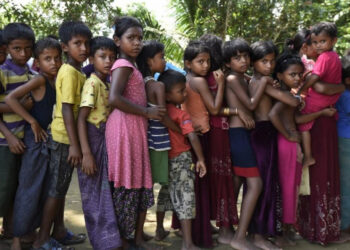The number of forcibly displaced people in the world is rising. 2017 marked the sixth consecutive year in a row that the displacement record was broken, and early numbers indicate 2018 followed suit.
The United Nations refugee agency’s data shows nearly 70 million people in the world have been forced to flee their homes, and every two seconds another person suffers this fate as a result of conflict or persecution.
Unfortunately, there is a rising population that is largely ignored when world leaders and humanitarian groups provide aid to help amend the global refugee crisis: the “climate refugee.”
Conflict Catalyst
Climate change is catalyst for conflict and unrest, and the disruption of peoples’ livelihood creates a situation of permanent internal and external migration.
Predicitons for climate refugees dwarf that of refugees fleeing persecution or conflict.
Due to worldwide indecision on climate and the ambiguous nature of assigning responsibility to mitigate it, predicting outcomes is all that experts can currently offer.
Internal and external migration are already severely affecting nations across the world. The Syrian Refugee crisis began as a drought, pushing those from farmlands into populated cities, which contributed to riots and conflict. But only after being victims of violence and gunfire were these Syrian citizens considered refugees.
New film by Matthieu Rytz examines the plight facing Kiribati in his new documentary "Anote's Ark". The low-lying Pacific nation is facing the unstoppable rise of the sea and will be gone before long, making its people the world's first nation of climate change refugees. pic.twitter.com/wZ1nCigd4M
— AFP News Agency (@AFP) February 2, 2018
At an American Security Project Event in Washington, D.C., the group’s CEO, Retired Marine Corp. Brigadier General Stephen Cheney, spoke about the urgent need to address migration and security as they relate to climate change.
“Yes I am the guy that sat in Berlin about a year and a half ago saying, ‘If you think you got a migration problem today, wait 20 years when you get 20 or 30 million that are going to roll up from the Sahel into Europe, then you’re going to have a real problem,” Cheyney said.
Climate change is a conflict multiplier. The example of Syria is an instance in which climate served as a catalyst for the conflict that would, in turn, affect millions of people.
‘Security’ Concerns and Mass Displacement
Mass migration and climate related incidents are going to severely cripple and alter the security systems set up today, according to the panelists. U.S. naval bases are already spending money to build sea walls in response to rising sea level, and military bases are among those most susceptible to damage from climate-change related weather incidents.
America is missing the mark, according to Cheney, who hears from Europe about the reality in experiencing climate change, which is not as much a regular reality in the United States.
“In your country its real. It is there today and you have to start planning for it right now,” Cheney said in reference to his colleague, Major General Munir Muniruzzaman.
Within his own country of Bangladesh, hundreds of thousands of people are routinely uprooted due to coastal flooding, and one meter of sea-level rise in the southern region would displace 25 million people by putting 20 percent of the country underwater.
Without adequate territory and resources to absorb the transition, a large portion of the population will be forced to migrate externally, Muniruzzaman said.
“This is concerning because the world has not been able to accomodae the few thousand Syrian refugees fleeing to Europe,” Esther Babson wrote in the group’s recap of the American Security Project event. “Therefore, the fate of millions of people attempting to relocate is unknown.”
With global superpowers like the U.S. actively scaling back on emissions regulation, the rest of the world has implicit permission to ignore environmental responsibility per the U.S. example.
Lack of Rights
Alex Randall, programme manager at the Climate and Migration Coalition, says that no estimate to the number of climate refugees is definitive, but not because they do not exist. Without a definition as to what counts as a climate refugee, there is no feasible way to determine who qualifies.
Lacking any formal definition or recognition by the U.N., refugees being displaced due to ongoing climate issues have extremely limited resources or rights despite the conditions of their migration.
UNHCR monitors the number of people forced to flee in order to provide aid in legal protection, administration, community services, public affairs and health. The lack of a legal definition for climate refugees creates a situation of ambiguity and helplessness for climate refugees displaced all over the world.
Refugees fleeing from persecution and conflict are granted rights under international law: right to asylum, right of return, right of non-refoulement and the right to family reunification.
Sea level rise, extreme weather, and erratic droughts or flood may displace large sums of people but in the eyes of the law they are not, as of now, refugees per se.
The only legal hope these refugees have is to take advantage of some existing international humanitarian law where it applies, despite the lack of refugee qualification.
Chief Operating Officer of the American Security Project, Andrew Holland, said that there needs to strict definitions to the climate refugee so that they fit within the U.N.’s legal definition of a refugee to answer the questions of who will qualify.
“The failure to recognize climate refugees is due to the fact that no nation wants to take on the obligation that comes with an internationally accepted status for these migrants,” said Muniruzzaman.
More on the Subject
As the world continues to face record high levels of displacement, newly released data from the United Nations’ Refugee agency shows that less than five percent of global refugees in need of resettlement were resettled in 2018.
Of an estimated 1.2 million refugees in need of resettlement worldwide in 2018, only 55,692 successfully reached host countries, the UNHRC report shows.


